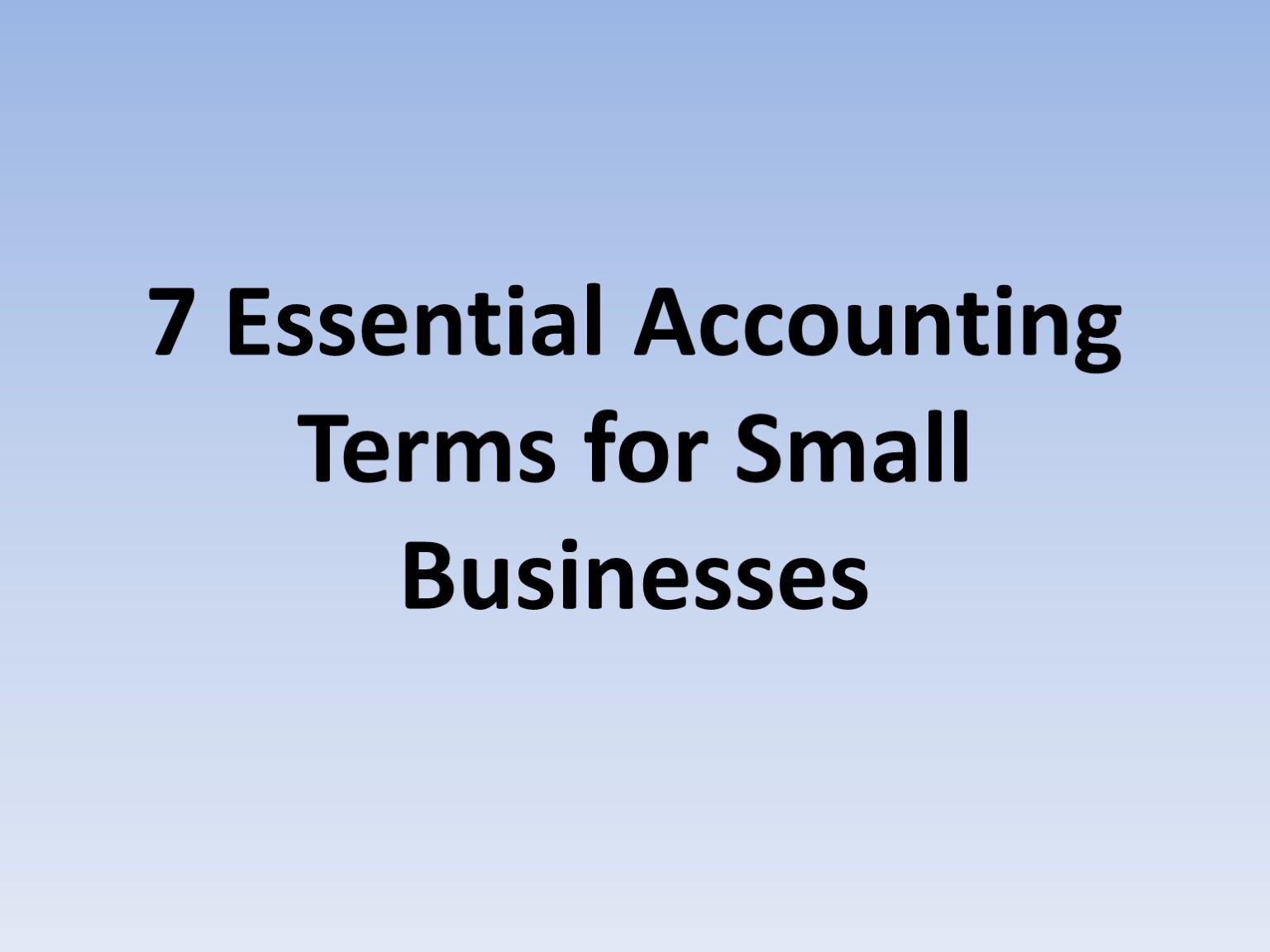7 Essential Accounting Terms for Small Businesses - PowerPoint PPT Presentation
Title:
7 Essential Accounting Terms for Small Businesses
Description:
Readout this post know about 7 Essential accounting terms for small businesses. – PowerPoint PPT presentation
Number of Views:16
Title: 7 Essential Accounting Terms for Small Businesses
1
7 Essential Accounting Terms for Small Businesses
2
- Working with your bookkeeper is the best way to
learn about how youre doing financially. It is
essential that you work closely together
throughout each quarter on an ongoing basis in
order keep up-to date and understand any issues
better than before! We have found that a lot of
small business owners are master of their trade
but have some difficulties in understanding the
accounting jargon or in communicating with the
bookkeeper to better understand the financial
health.
3
- If you want to increase your accounting knowledge
so you can have more informed, insightful
discussions with your account this quarter? - Start right now, with this list of 7 essential
accounting terms for small business owners.
4
- 1. Balance Sheet A balance sheet is a snapshot
of your company's financial position at a
specific point in time. It lists your assets
(what you own) and your liabilities (what you
owe). The difference between the two is your net
worth. Balance sheets provide the basis for
computing rates of return for investors and
evaluating a company's capital structure. In
short, the balance sheet is a financial statement
that provides a snapshot of what a company owns
and owes, as well as the amount invested by
shareholders. Balance sheets can be used with
other important financial statements to conduct
fundamental analysis or calculating financial
ratios.
5
- 2. Profit and Loss Statement A profit and loss
statement, also known as an income statement, is
a summary of your company's revenues and expenses
over a specific period. The PL statement is a
financial report that shows how much profit or
loss exists in an organization at any given time.
This can be broken down into two categories
positive numbers, which represent increases to
company revenue negative figures related with
cost reduction efforts gone sour because they
decreasingly affect their bottom line (the amount
left over after all expenses have been paid).
6
- 3. Accounts Receivable Accounts Payable
Accounts receivable is the total amount of money
that your customers owe you. This figure includes
both current and past-due invoices. Accounts
payable is the total amount of money you owe your
suppliers. This figure includes both current and
past-due invoices.
7
- 4. Cash Flow statement Cash flow is the movement
of cash in and out of your business. It's
important to track your company's cash flow so
you can make sure you have enough cash on hand to
cover your expenses. The CFS measures how well a
company manages its cash position, meaning how
well the company generates cash. The CFS
complements the balance sheet and the income
statement. The main components of the CFS are
cash from three areas operating activities,
investing activities, and financing activities.
The two methods of calculating cash flow are the
direct method and the indirect method.
8
- 5. Budget A budget is a plan for how you want to
use your company's money over a specific period.
It can help you track your expenses and stay on
track with your financial goals. A budget is
basically a financial plan for a defined period,
normally a year that is known to greatly enhance
the success of any financial undertaking.
Corporate budgets are essential for operating at
peak efficiency. Aside from earmarking resources,
a budget can also aid in setting goals, measuring
outcomes, and planning for contingencies.
Personal budgets are extremely useful in managing
an individual's or family's finances over both
the short- and long-term horizon.
9
- 6. Gross profit and net Profit Gross profits are
what remains when you subtract COGS from your
total revenue. Net Profit, on other hand, reveals
more details about how much money is made after
all operating expenses have been paid - including
taxes owed or interest paid for debt using credit
card bills as an example of borrowings against
inventory purchases which will decrease its worth
over time if not proactively retired through
sale/exchange transactions with respective
creditors.
10
- We hope this list of essential accounting terms
will help you better understand your company's.
Please let us know if there were any other terms
you would like for us to help you with, join the
conversation, and empower smarter decision-making.

